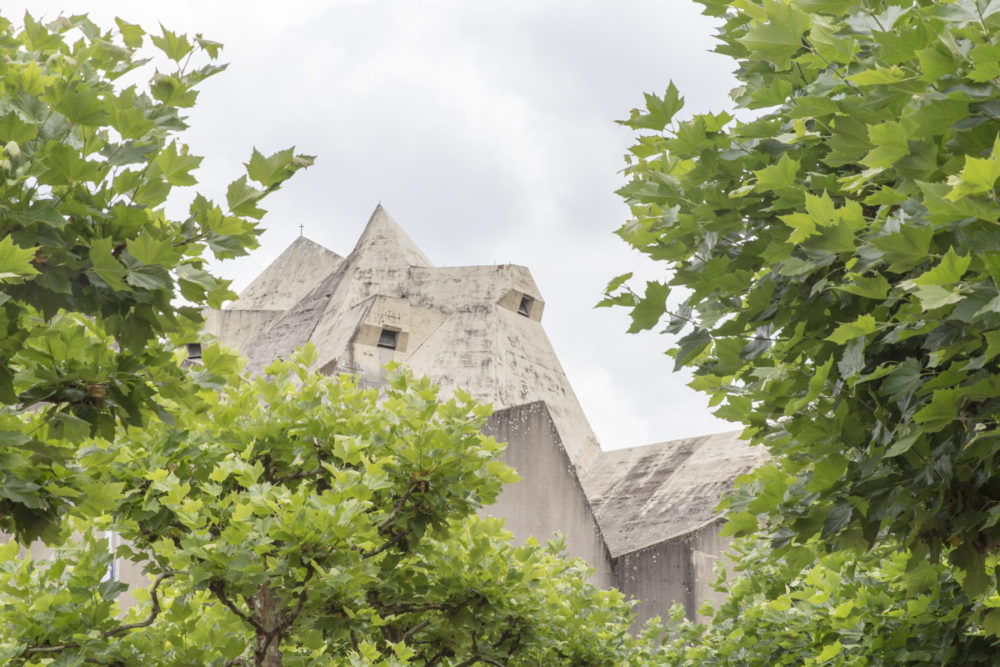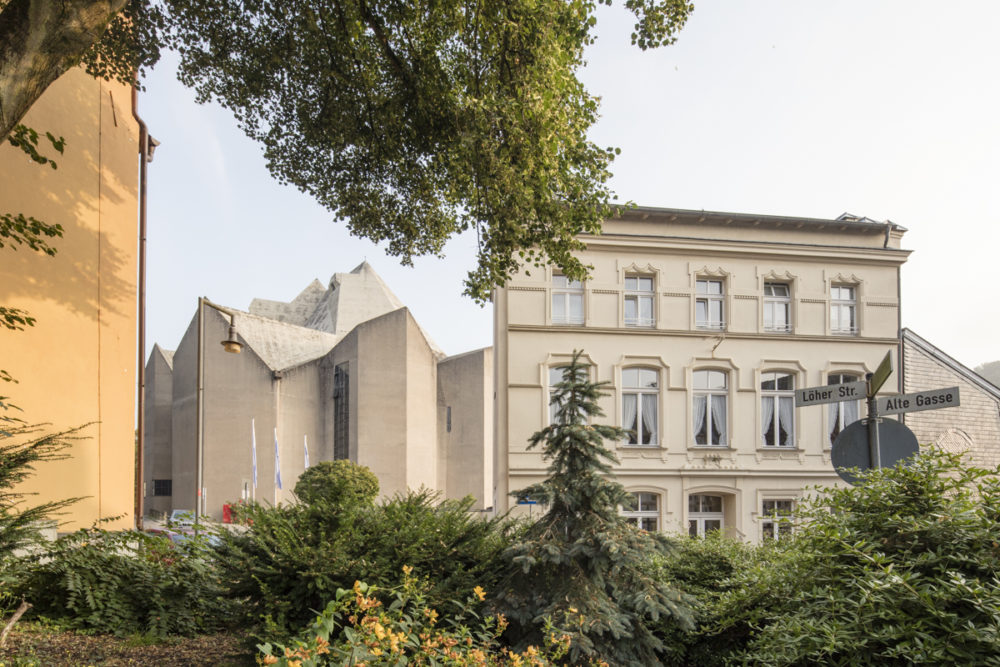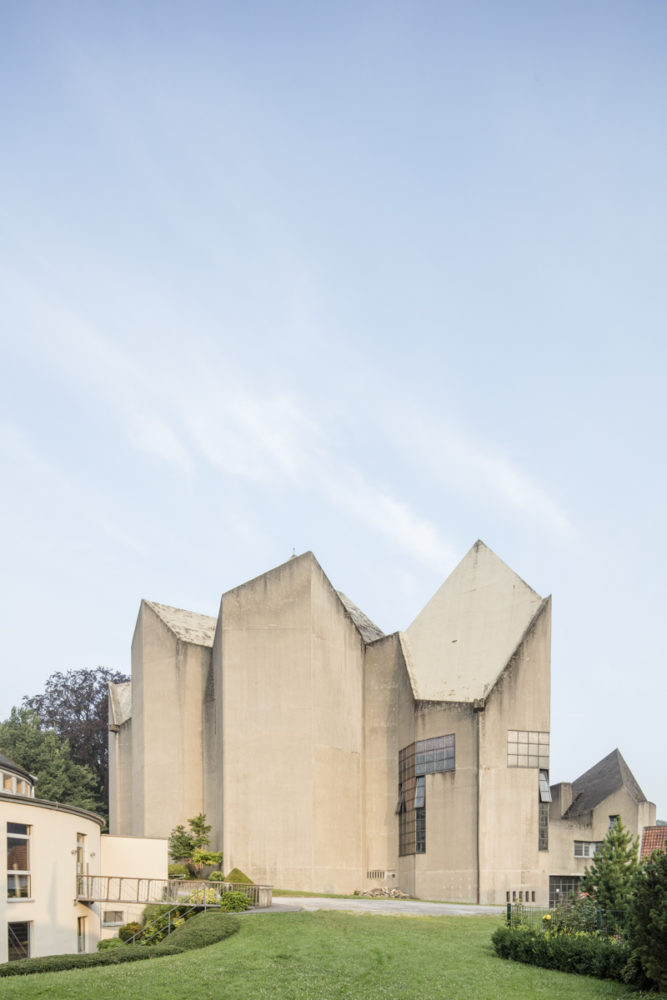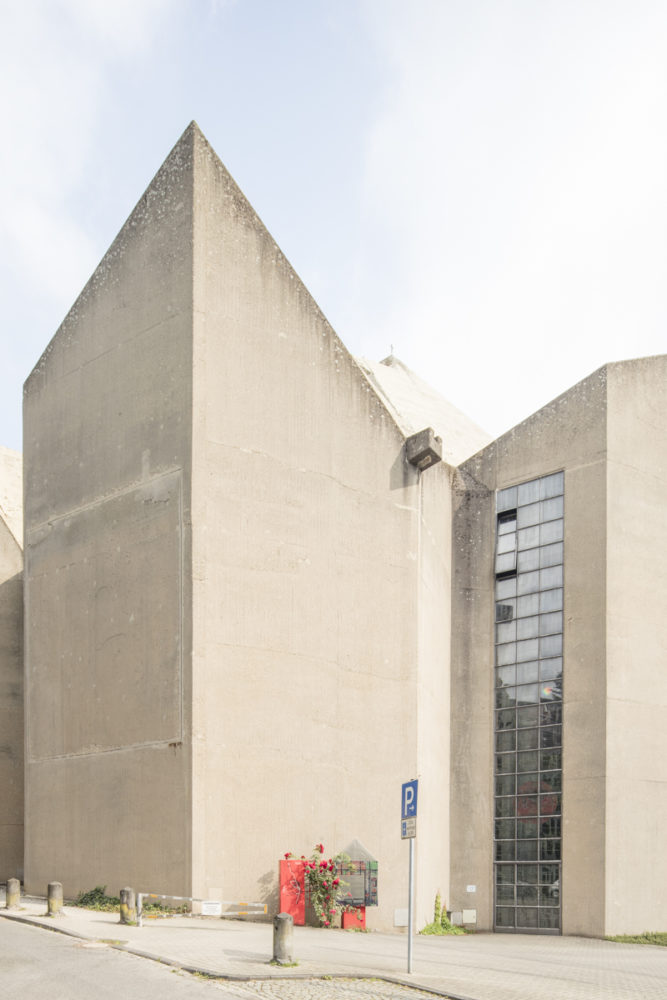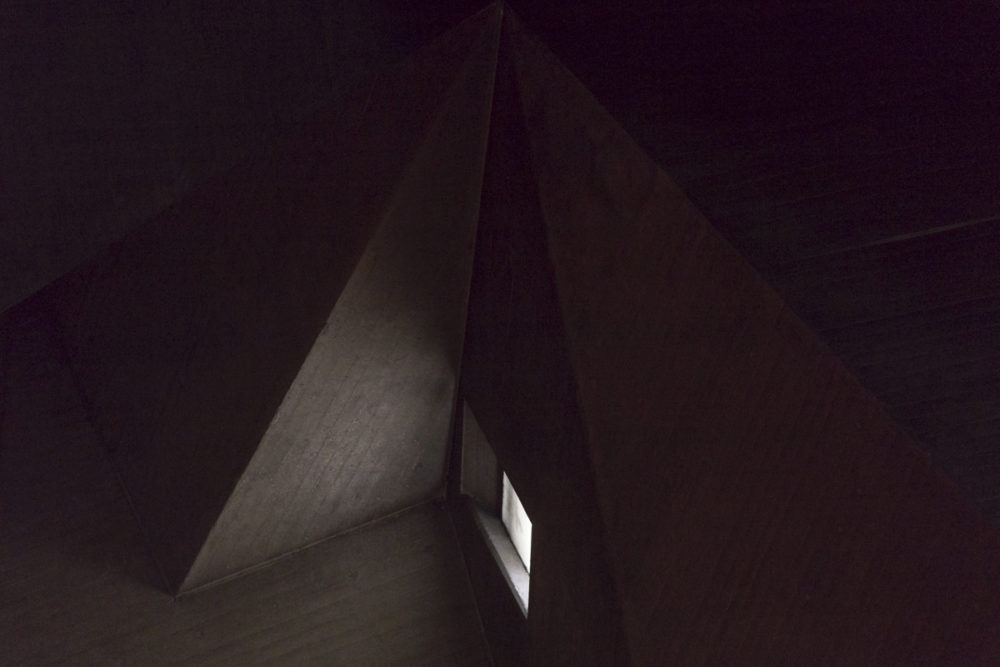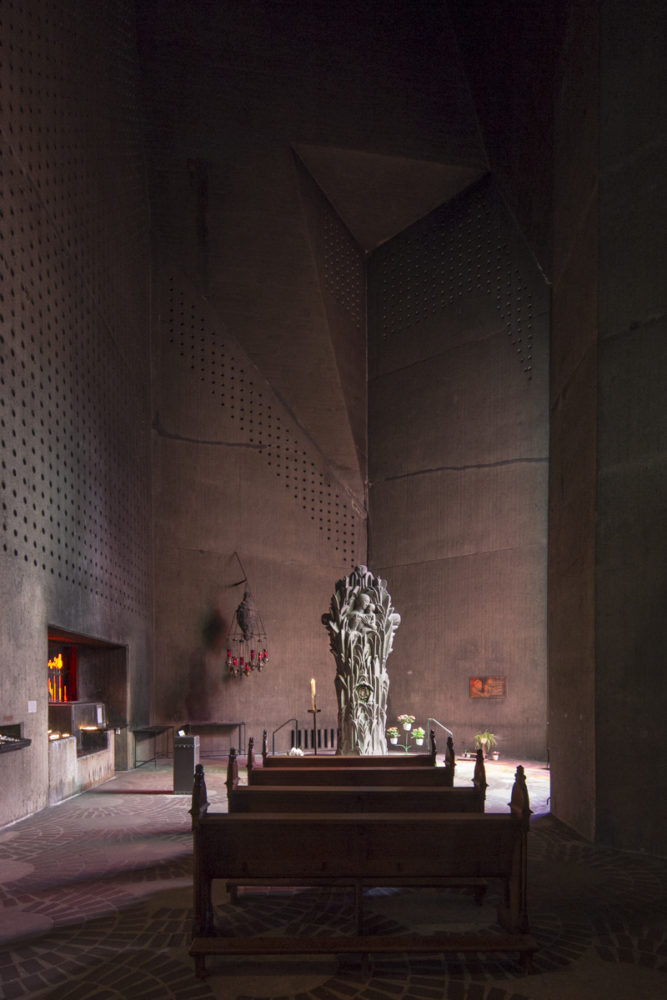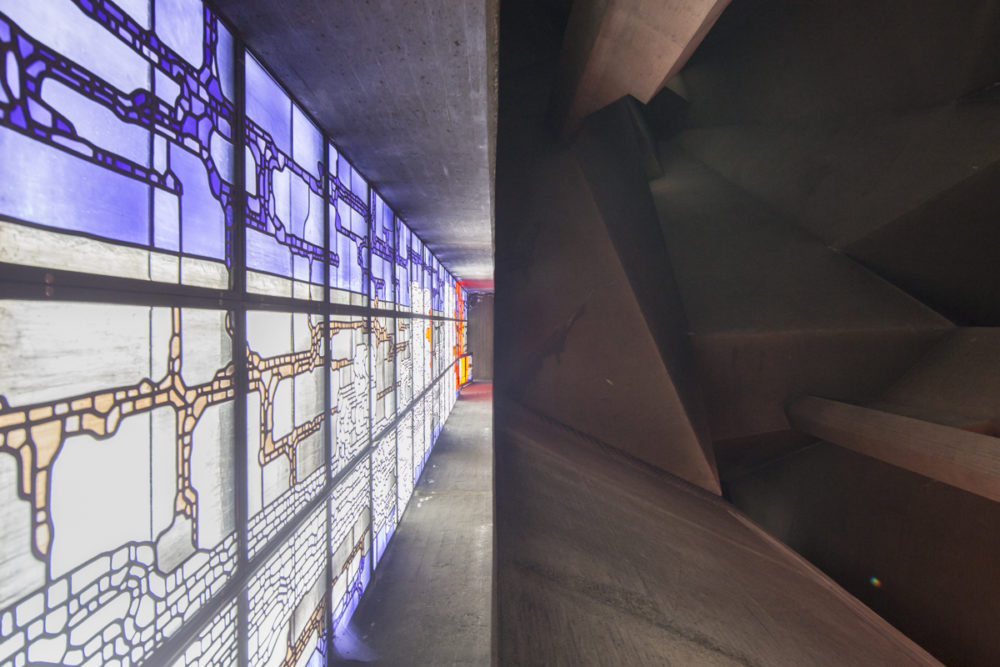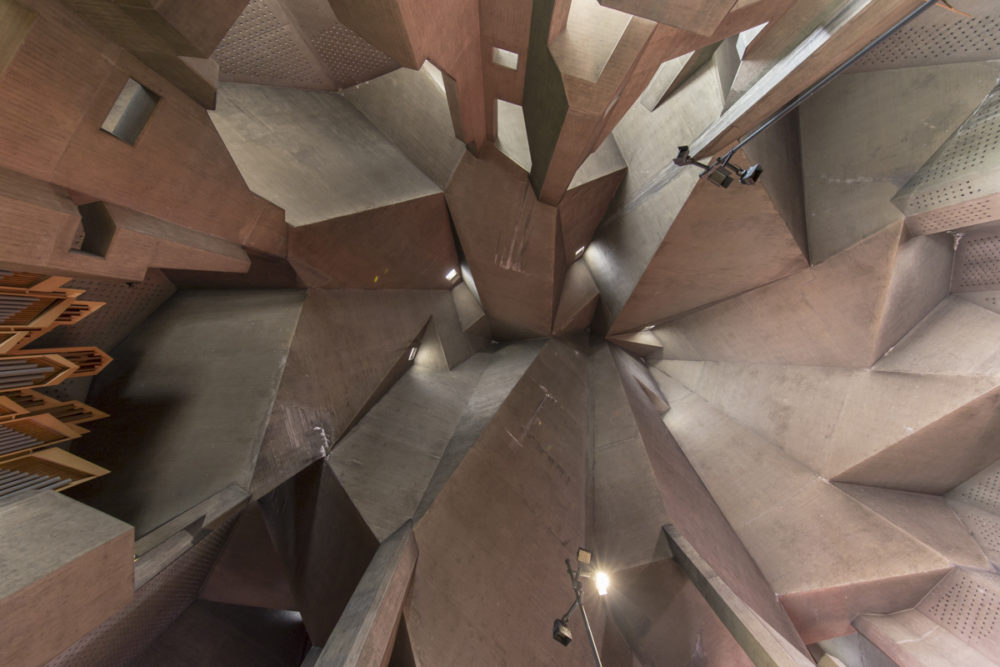In 1986 the Pritzker Architecture Prize announced their first German laureate. In a speech at the ceremony in London’s Goldsmiths’ Hall, the Duke of Gloucester suggested that the prize “may not guarantee immorality,” inferring, perhaps, that not even the most prestigious award in architecture could compete with an œuvre so compact, focussed and enduring as that of Gottfried Böhm—a “son, grandson, husband, and father of architects.”
The Pilgrimage Church in Neviges—a small hamlet close to Dusseldorf—was conceived in the context of an invited international competition (issued in 1962) and a progressive client: the Archdiocese of Köln, led by Josef Cardinal Frings. The resulting monolith (along with its Via Sacra and surrounding buildings) required 7,500 cubic metres of concrete and 510 tons of steel-reinforcing bar. Relatively unknown, it stands among the most decisive, significant, and unsung spaces of the 20th Century.
